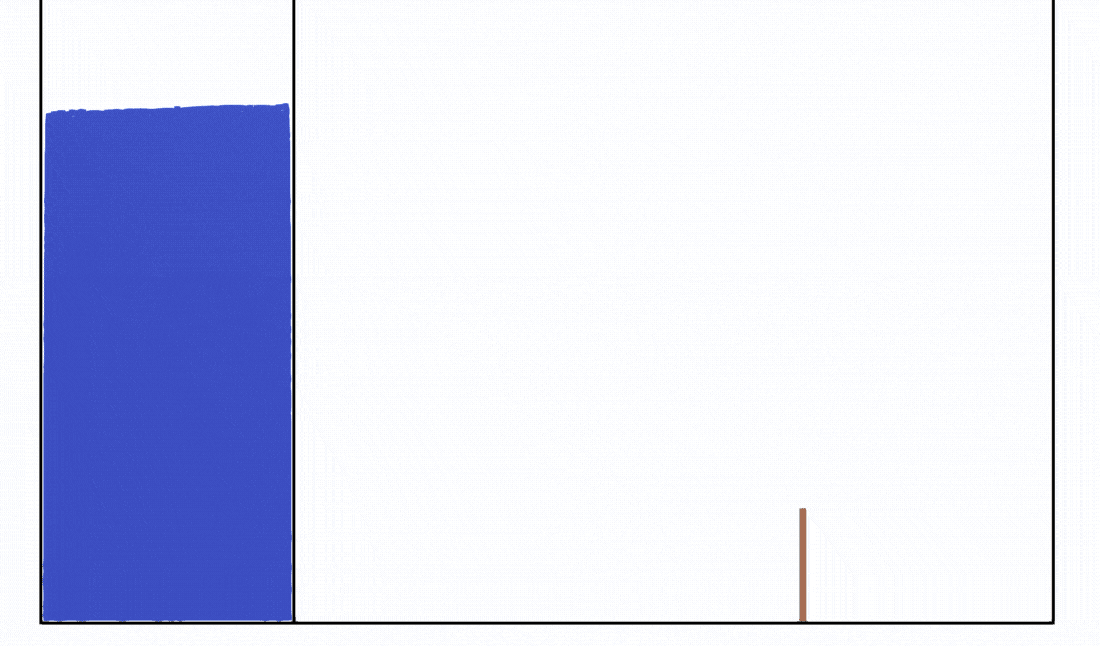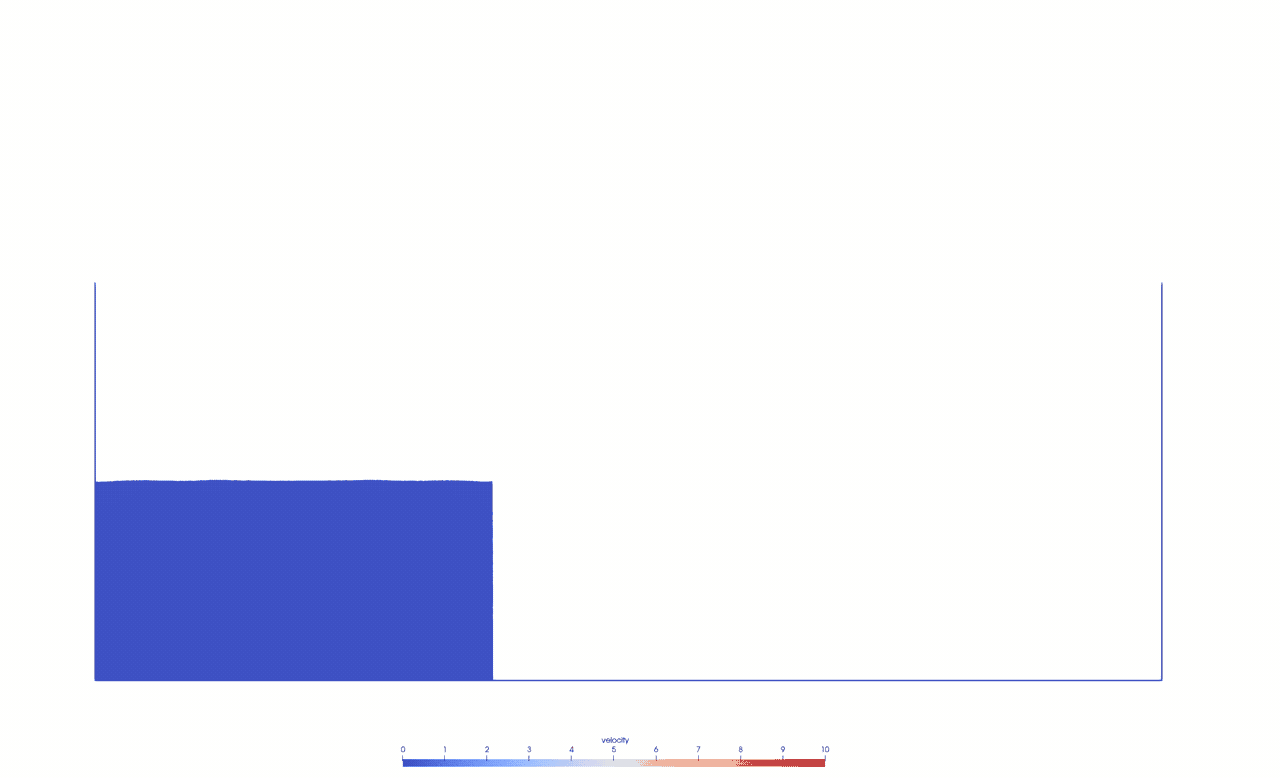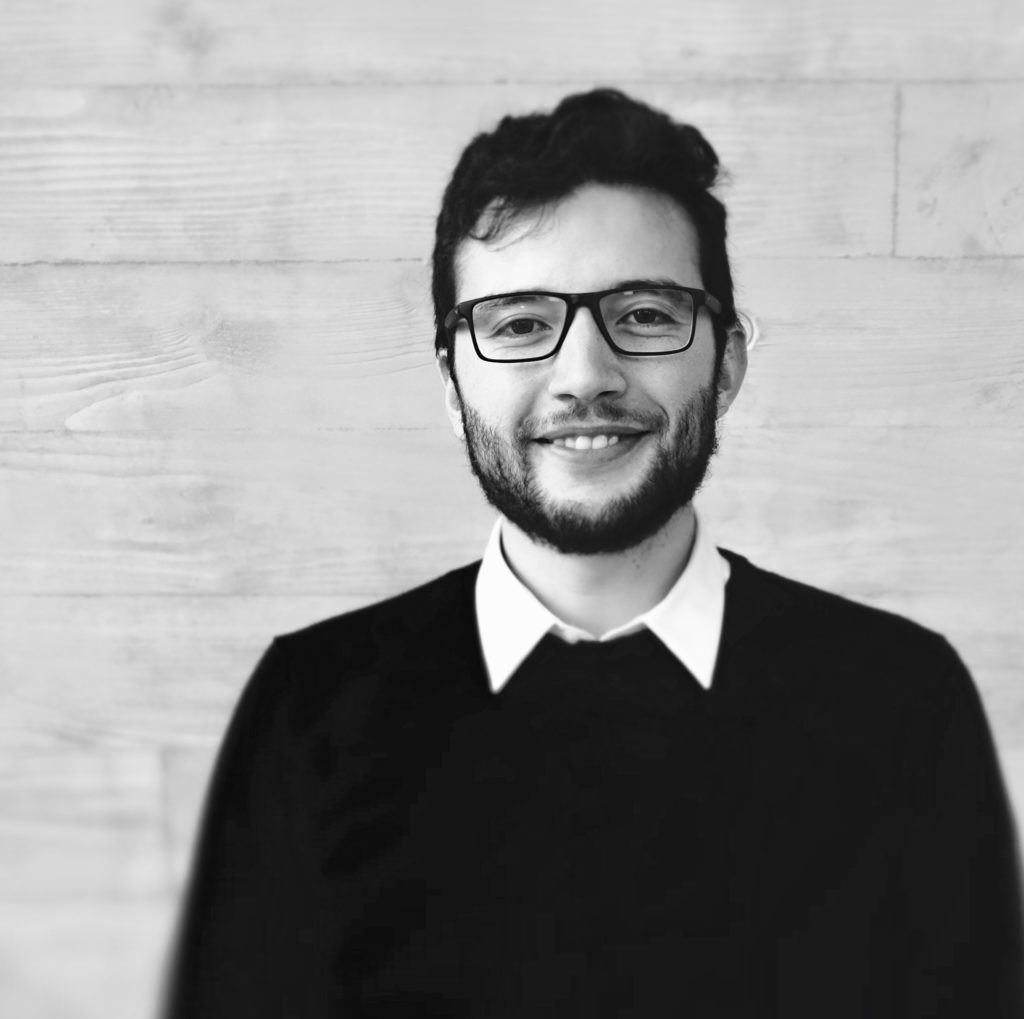To simulate elastic structures, we use a total Lagrangian SPH formulation [1].
We simulate a dam break against a flexible structure based on the setup given by [1].
For the fluid dynamics, a weakly-compressible Lagrangian SPH formulation with an artificial viscosity by Monaghan [2] and boundary force particles to model the tank [3] was used.
This animation shows the simulation in 0.1x real time with 8.7k fluid particles and 455 particles to model the flexible structure.

References:
[1] O’Connor, J., Rogers, B. D. (2021). “A fluid–structure interaction model for free-surface flows and flexible structures using smoothed particle hydrodynamics on a GPU.” In: Journal of Fluids and Structures, 104. https://doi.org/10.1016/J.JFLUIDSTRUCTS.2021.103312
[2] Monaghan, J. J. (1989). “On the Problem of Penetration in Particle Methods”. In: Journal of Computational Physics, 82(1), 1–15. https://doi.org/10.1016/0021-9991(89)90032-6
[3] Monaghan, J. J., & Kajtar, J. B. (2009). “SPH particle boundary forces for arbitrary boundaries”. In: Computer Physics Communications, 180(10), 1811–1820. https://doi.org/10.1016/j.cpc.2009.05.008

